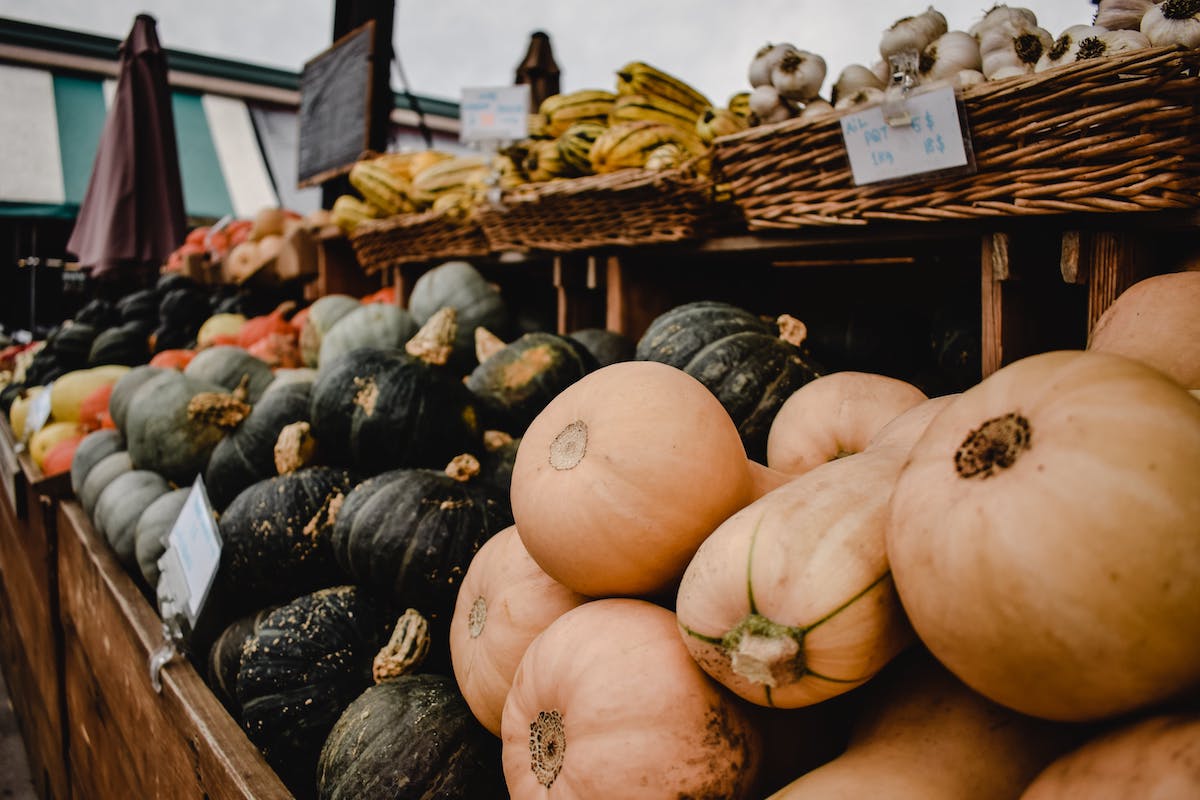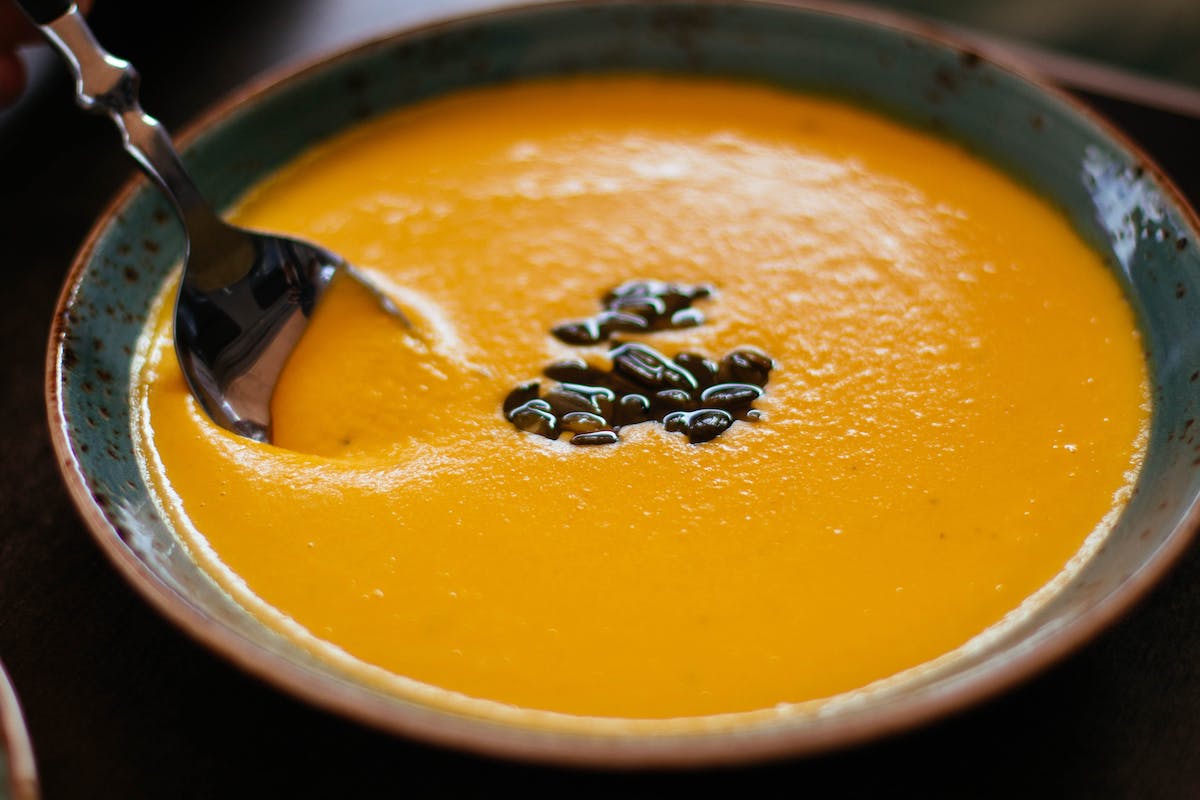
Summer and spring are often best known for fresh fruits and vegetables. The bounty certainly is delicious during warmer months, with everything from asparagus to peaches coming in season from April through August. However, the seasonal produce aisle doesn’t go dark in the winter. Have you ever heard of winter squash? The term refers to several types of squash, including butternut, pumpkin, and acorn.
The name is also a misnomer. In the North, winter squash is harvested in the fall (by October) before frosty nights set in. Still, winter squashes are hearty, can stand up to savory comfort-food classics like mashed potatoes, and are a dietician-favorite food.
“I love winter squash because there are a lot of easy ways to use it, and it goes with a lot of different flavors,” said Amanda Sauceda, MS, RD, a registered dietician who developed The Mindful Gut approach. “Plus, you can buy a squash and not worry about it going bad in the fridge at the end of the week. Winter squash can last a while in your kitchen.”
Need inspiration? Dieticians shared two types: Health benefits that’ll have you running to snag winter squash during your next grocery haul, plus tips for enjoying the seasonal produce.

The 4-1-1 on winter squash
Winter squash isn’t just one vegetable, shared Kelsey Costa, MS, RDN, a registered dietitian and nutrition consultant for the National Coalition on Healthcare. Instead, you can find many types of winter squashes, allowing people to find one that suits their tastes and recipe needs.
Costa explained some of the common types of winter squash: common types include:
- Butternut squash: This sweet, nutty squash boasts a creamy texture.
- Acorn squash. This squash is subtly sweet and a little nutty. It’s tender and has a more brous texture.
- Spaghetti squash. Expect to taste mild sweetness when eating spaghetti squash, which has a string-like texture.
- Delicata squash. You’ll enjoy a creamy, soft texture and slightly sweet taste when consuming delicata squash.
- Kabocha squash (Japanese pumpkin). This squash is loved for having a rich, sweet flavor juxtaposed with a starchy yet moist texture.
- Hubbard squash. Hubbard squash tastes rich and a bit like pumpkin. The texture is grainy.
- Sugar pumpkin. As the name implies, sugar pumpkin is a sweeter version of traditional pumpkin. Eaters enjoy a smooth texture.
- Honeynut squash. This smaller, hybrid version of butternut squash is a bit sweeter and nuttier.
Which winter squash is the healthiest?
There isn’t a clear winner. Each of the winter squashes offers benefits.
“For instance, butternut squash boasts a high vitamin A content, acorn squash is packed with dietary fiber, and spaghetti squash has fewer carbohydrates,” Costa says. “Each of these squashes presents unique health benefits, making them all excellent choices.”
If accessibility is an issue, you might reach for what’s in stock at your local store.
“The most readily available options are usually butternut, acorn, and spaghetti squashes, typically found in every grocery store,” Costa says.
Is winter squash anti-inflammatory?
Costa says more research is needed, but there is reason to believe winter squash may have anti-inflammatory properties.
“Winter squash is considered to have anti-inflammatory properties primarily due to the presence of various bioactive compounds, such as carotenoids and flavonoids, which have been reported in several scientific studies to possess potent anti-inflammatory effects,” Costa said.
Is squash good for belly fat?
Winter squash can help with belly fat and weight management, though consuming this food is not a magic solution.
“There is often a misconception that to lose belly fat, you have to cut out a lot of starchy foods, but that’s incorrect,” Sauceda said. “Starchy foods, like winter squash, are a source of complex carbs, which give your body sustained energy for a healthy metabolism. Squash can be helpful to reach your fiber goals, and that nutrient matters for your belly. Fiber helps to keep you regular, so if you’re feeling a bit bloated, it could be because you’re constipated.”
This benefit is vital for your overall health.
“Maintaining belly fat within a healthy range is crucial for overall health,” Costa said. “Excessive abdominal fat is linked to several health risks, including cardiovascular disease, diabetes, and certain types of cancer. Importantly, it isn’t just the fat you can see, subcutaneous fat, that poses a problem. The hidden fat, visceral fat, surrounding your organs is also of concern, as it can cause inflammation and insulin resistance.”

Delicious ways to enjoy winter squash
Ready to dig into winter squash this winter? Costa and Sauceda shared their favorite ways to eat winter squash.
- Roasted with stuffing added. Sauceda loves roasting squash and adding stuffing as a filling, calling the dish an “easy one-pan dinner” that is “so comforting.”
-
Roasted with cinnamon. Costa says sprinkling some cinnamon over roasted squash enhanced the sweetness.
- As sauce, Sauceda suggests using butternut squash as the sauce for one of life’s greatest comfort foods, mac and cheese. “You could also use pureed butternut squash or pumpkin for baked goods like muffins,” she said.
- Soup. Combined two seasonal dishes by making a winter squash soup. “You could use butternut squash, acorn squash, and even pumpkin,” Sauceda said.
- Noodle replacement. Craving pasta but not the carb count? Consider spaghetti squash. When Sauceda wants the best of both worlds, she adds the stringy squash to her pasta dish.
- Mashed squash. The creamy texture is reminiscent of mashed potatoes, but mashed squash doesn’t have the refined carb count. “The squash lends a rich, buttery texture that, when mashed, creates a satisfying side dish that’s both comforting and nutritious,” Costa said.
Ultimately, getting creative in the kitchen and mixing your produce with winter squash can make eating at home more fun (and nutritious).
Editors' Recommendations
- Meet the mail-order wagyu beef company prized by Gordon Ramsay and David Chang
- Romaine lettuce, iceberg lettuce, and more: Science says one is actually the healthiest choice
- The best food gifts for an amateur chef: Cookbooks, Caraway cookware, and more
- All-Clad kitchenware, GIR spatulas and more: The best kitchen gifts for anyone who lives at Williams Sonoma
- It’s time to pay attention to Hawaiian rum — why this liquor should be on your bar cart




